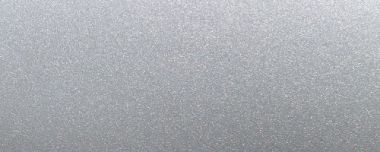Surface preparation for coating
General aspects:
The surface must be free of substances that disturb the adhesion. These include oils, fats and surfactants. Rust, scale, dust and dirt must also be removed.
Steel, iron:
Depending on the requirements prescribed regarding the durability of the coating system or the coating, mechanical (e.g. degreasing, blasting) or chemical (phosphating, chromating) pretreatment processes should be used.
Laser-machined sheets:
A loose oxide layer covering can form on the edges of these sheets and this must be mechanically removed.
Rolled sections:
These commonly exhibit a loose rolling skin, which must be mechanically removed using a wire brush or by blasting.
Galvanised steel:
One cleaning option is by using an ammoniacal wetting agent. Due to different types of galvanisation, an adhesion test before coating is advisable. Where appropriate, DREISORIT-PRIMER F3004/F3005 can be used as precoating.
Galvanised steel exists in two variants: hot-dip galvanising and electrolytic galvanising.
With hot-dip galvanising, the steel objects are immersed in a zinc bath. This results in the formation of zinc layers, which can be up to 80 μm thick and exhibit a characteristic flower pattern. The Sendzimir Process represents a special variant of hot-dip galvanising, in which the steel sheet is fed through the zinc bath and then rolled, resulting in particularly thin layers with a delicate flower pattern. Hot-dip galvanised surfaces are more of a problem as a substrate for coating, and usually require a primer.
Furthermore, the zinc layer is often porous and exhibits air inclusions. This leads to the risk of the formation of bubbles in the subsequent coating process.
Electrolytic galvanising, in contrast, does not create any flowers but instead an evenly structured and non-slip, coarse zinc layer, which can generally be coated without any problems.
Aluminium:
Sand with a sanding pad and then clean with CHAMPIONS-CLEAN FROM DREISOL L9024 or DREISOL WASHING THINNER V0110
Blasting:
The most common abrasives for steel are steel balls, steel shot, sand and corundum. They are used in jet spraying and wheel blasting machines.
Sweeping:
If thin-walled parts are blasted, then so-called sweeping is recommended. This is a low-pressure blasting process. This method is primarily used for cleaning hot-dip galvanised surfaces using non-metallic abrasives.
Degreasing:
The following cleaning agents are recommended for steel surfaces:
- PREMIUM-CLEAN from DREISOL L9025
- DREISOL-WASHING THINNER V0110
For aluminium and non-ferrous metals, we recommend:
- CHAMPIONS-CLEAN fromDREISOL L9024
Aqueous-based cleaning agents, such as CHAMPIONS-CLEAN and PREMIUM-CLEAN, are applied using a spray bottle or garden sprayer and then wiped with a clean cloth. These cleaning agents are also ideal for use in high-pressure cleaners (up to 90 °C). Due to the detergent substances contained, the cleaning power is significantly enhanced.
Solvent-based cleaning agents, such as DREISOL WASHING THINNER V0110, are applied onto the surface using a lint-free cloth. Here the dirt is absorbed by the cloth through rubbing.
Phosphating:
This is a pretreatment process primarily for iron and steel surfaces. The principal aims here are the creation of a passivation layer for achieving a larger contact surface for the coating (providing better adhesion) and a greater degree of corrosion protection. A distinction is drawn between iron phosphating and zinc phosphating.
With iron phosphating, a wafer-thin iron phosphate layer is created by the reaction of the phosphoric acid contained with the surface. With zinc phosphating, a thicker layer of zinc phosphate crystals is formed due to precipitation from a solution containing zinc phosphate, which produces a significant surface roughness and thereby – similarly to grinding processes – a better adhesion.
Ammoniacal wetting agent:
The wetting solution is mixed as follows: 100 ml 25% liquid ammonia and 5 ml wetting agent (e.g. Pril) with 1 litre of water. Apply the wetting solution onto the galvanised surface with a spray bottle or sponge, and then rub with a non-woven abrasive (grinding fleece) until the surface becomes grey in colour. Finally rinse with clear water.



